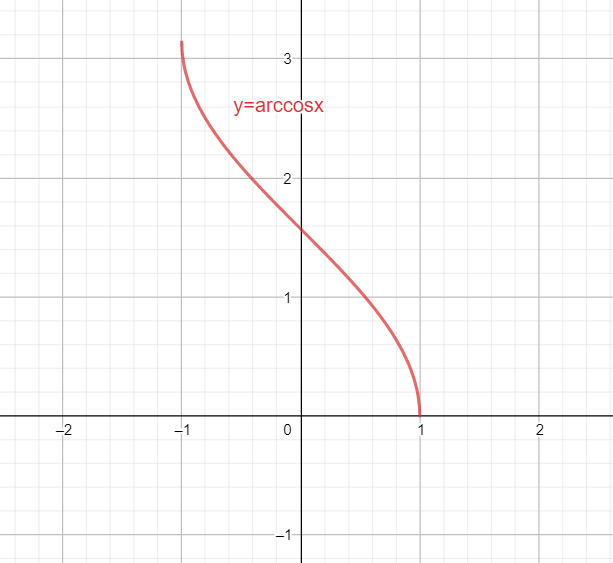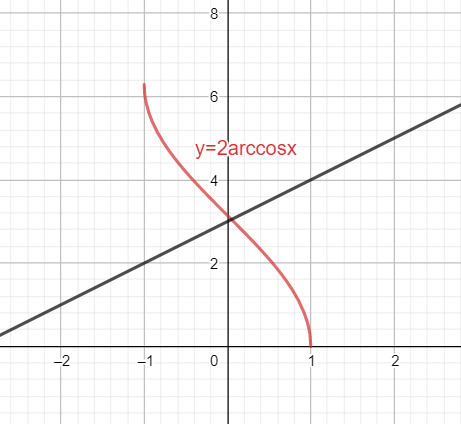Question
Question: Find the number of solutions of the equation \(2{{\cos }^{-1}}x-x-3=0\) [a] No solution [b] One ...
Find the number of solutions of the equation 2cos−1x−x−3=0
[a] No solution
[b] One solution
[c] Two solutions
[d] More than two solutions
Solution
- Hint: Draw the graphs of cos−1x and x+3 and find the number of points of intersection of these curves. The number of points at which these curves intersect gives the number of solutions of the given equation.
Complete step-by-step solution -
Before dwelling into the solution of the above question, we must understand how cos−1x is defined even when cosx is not one-one.
We know that cosx is a periodic function.
Let us draw the graph of cosx

As is evident from the graph cosx is a repeated chunk of the graph of cosx within the interval [A, B] and it attains all its possible values in the interval [A, C]. Here A=0,B=2π and C=π.
Hence if we consider cosx in the interval [A, C], we will lose no value attained by cosx, and at the same time, cosx will be one-one and onto.
Hence cos−1x is defined over the domain [−1,1], with codomain [0,π] as in the domain [0,π], cosx is one-one and Rcosx=[−1,1].
At the point of solution, we have
2cos−1x=x+3.
Hence we plot the graphs of 2cos−1x and x+3 and find the number of intersection points of these curves. This will give the number of solutions of the equation.
The graph of an inverse of a function is the mirror image of the function with respect to the line y=x.
Hence the graph of cos−1x is as follow

If the graph of f(x) is known, then the graph of af(x) can be drawn by extending the graph “a” times along the y-axis.
Hence the graph of 2cos−1x can be plotted as shown below

The graph of x+3 is a straight line passing through (-3,0) and (0,3)
Hence the graph of x+3 can be plotted as shown below
As is evident from the graph, the two graphs intersect at one point. Hence the number of solutions of the equation is one.
Hence option [b] is correct.
Note: [1] Alternative Solution:
A strictly increasing and a strictly decreasing continuous function can cut each other at most one point.
We know that 2cos−1x is a strictly decreasing continuous function and x+3 is a strictly increasing continuous function. Hence the number of solutions can be at most one.
Now at x= -1, we have 2cos−1(−1)=2π and −1+3=2
Hence 2cos−1x lies above x+3
At x= 1, we have 2cos−11=0 and 1+3=4
Hence 2cos−1x lies below x+3.
Hence in between the domain [-1,1], the two functions cut each other.
Hence the number of solutions is exactly one.
